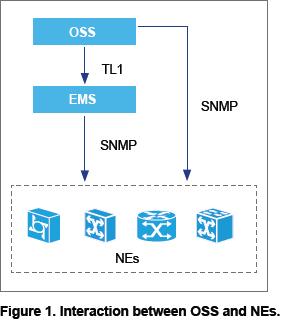The Road to FTTx O&M Specifications
As xPON FTTx networks develop rapidly in China, users are experiencing higher bandwidth and better services. However, with fast-paced FTTx development, a number of issues arise relating to fast service provision, quick fault locating, and accurate performance testing.
Mature O&M specifications can boost xPON growth. Through years of effort, xPON O&M specifications have been drafted that cover four key modules: service provision, integrated test, integrated alarm, and resource query. Each module has well-defined functions and interfaces. Depending on actual interface requirements, a variety of application scenarios, procedures, and commands are also specified. Interface specifications cover management of Optical Line Terminal (OLT), Multi-Dwelling Unit (MDU), and Single Family Unit (SFU).
Different Interfaces Lead to Complicated O&M
Different Business Operation Support Systems (BOSSs) are being deployed in cities throughout China, and northbound interfaces used for PON management are different. These northbound interfaces are supplied by different vendors and have different functions and protocols. This leads to:
■ Difficulty in system interconnection: An Operation Support System (OSS) needs to interconnect with northbound interfaces supplied by different vendors.
■ Difficulty in interface development: Vendors need to develop tailor-made northbound interfaces and conduct joint debugging.
■ Difficulty in equipment maintenance: Vendors need to maintain customized northbound interfaces. If a northbound interface alters, OSS needs to be changed accordingly.
■ Difficulty in vendor coordination: Vendors need to coordinate with one another for interconnection and joint debugging of their northbound interfaces. When a new interface is required, all vendors need to adjust their interfaces.
Choosing a Suitable Interconnection Mode
For automatic service provision, OSS may interact with EMS via a TL1 northbound interface and send orders to network elements (NEs) via EMS. It may also interact directly with NEs via the SNMP protocol.
For direct SNMP access, all NEs need to interface with OSS, which leads to heavy OSS interconnection and maintenance work. Because Management Information Base (MIB) varies from one vendor to another, and from one NE to another, OSS must interact with NEs independently. When an NE changes its function and MIB, OSS must be altered accordingly. The same kind of NEs may even have different versions. Therefore, it is necessary to maintain compatibility among different versions of NEs.

Because NEs fail to support SNMP access to functions with large volumes of data―such as 112 test, Single Ended Line Test (SELT), Double Ended Line Test (DELT), and signaling trace―OSS cannot access all NE functions directly through SNMP.
Moreover, there are restrictions to ONU networking. When ONU uses an IP address of a private network, managing ONU through a SNMP-proxy connection is difficult. Without an IP address, ONU cannot be managed directly.
The key problem of direct SNMP access is that many details about NE interfaces are exposed to OSS, and OSS is extremely sensitive to interface changes. A minor change of interface requires alteration of the OSS version. This leads to frequent OSS maintenance and increased costs.
However, when a TL1 northbound interface is adopted, any change in the interface or difference among NEs can be well encapsulated by EMS. This ensures stability of the northbound interface.
Milestones of Standardization Work

ZTE played an active role in drafting the specifications for northbound interfaces. The company established a special team that was fully involved in standardizing, developing and testing of northbound interfaces. The team now runs interface trials in Shanghai and Wuhan. Ranked first in interface tests, their standards have been highly recognized in the industry.
Benefits
A standard northbound interface for PON management screens the differences between NE functions supplied by different vendors. This simplifies FTTx O&M. Differences between access technologies can also be screened, allowing good compatibility with EPON, GPON, 10G xPON, XG PON, and WDM PON.
FTTx O&M specifications take into consideration interface requirements in various application scenarios, and give a clear operation procedure for OSS. Because OSS no longer needs joint debugging or a direct interface with all NEs, interaction between OSS and NEs is significantly improved.
Trials conducted in Shanghai, Wuhan, and Quanzhou with standard northbound interfaces for PON management have turned out great results. These standard interfaces make BOSS development easier and drive the widespread deployment of xPON networks.